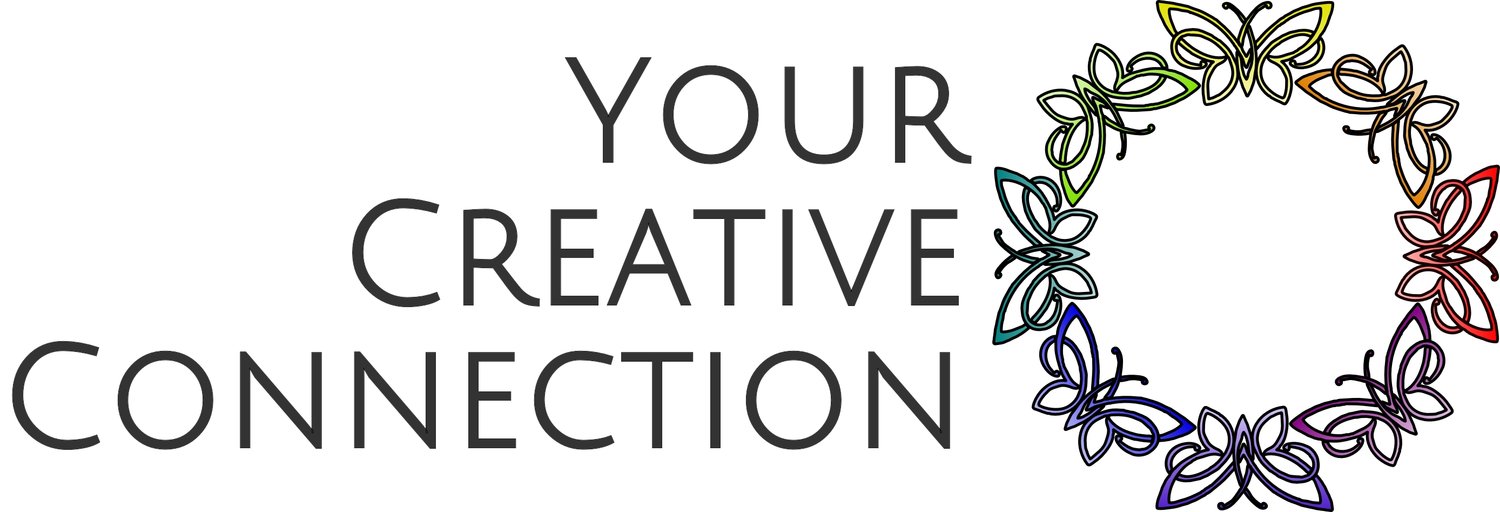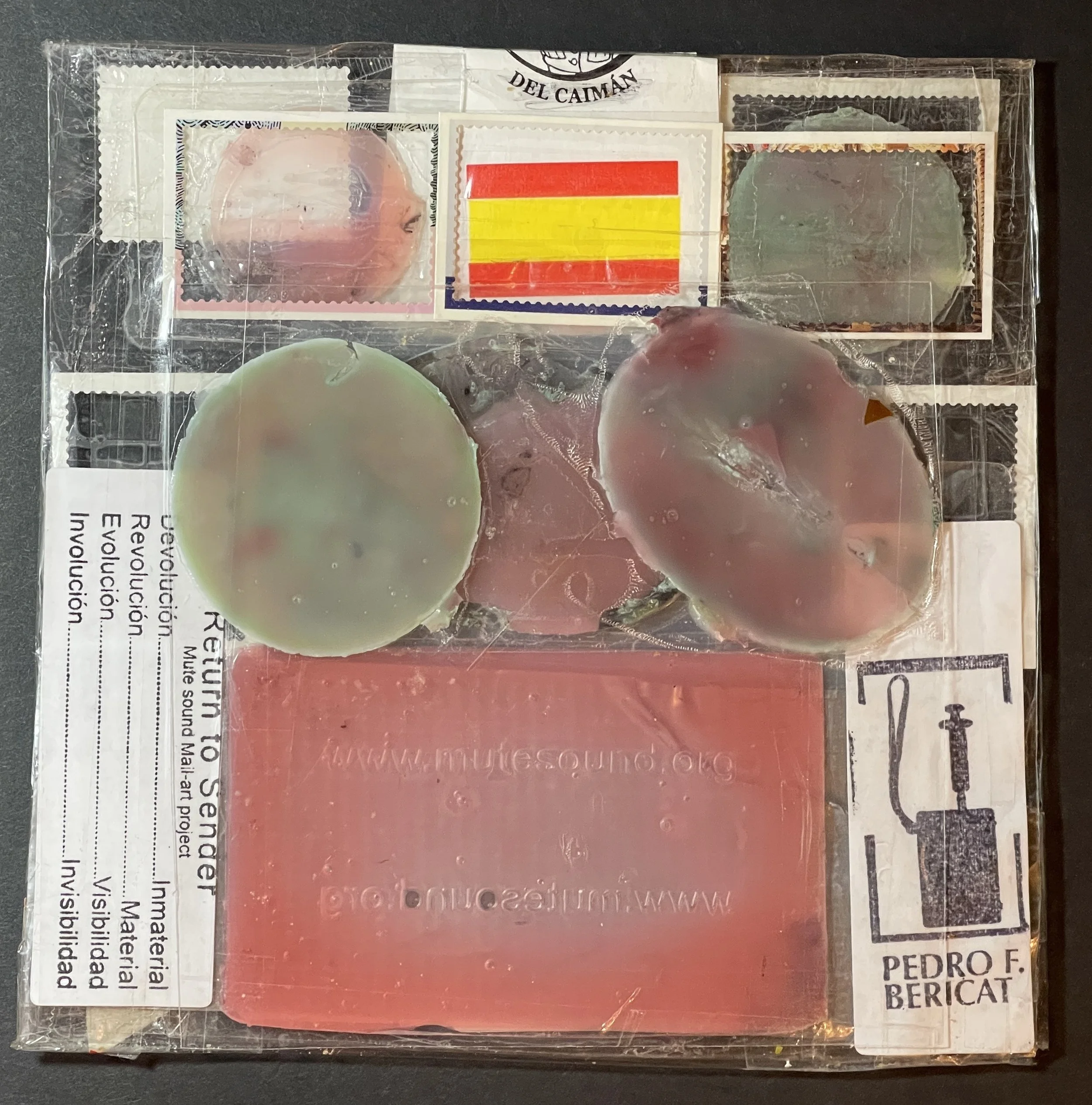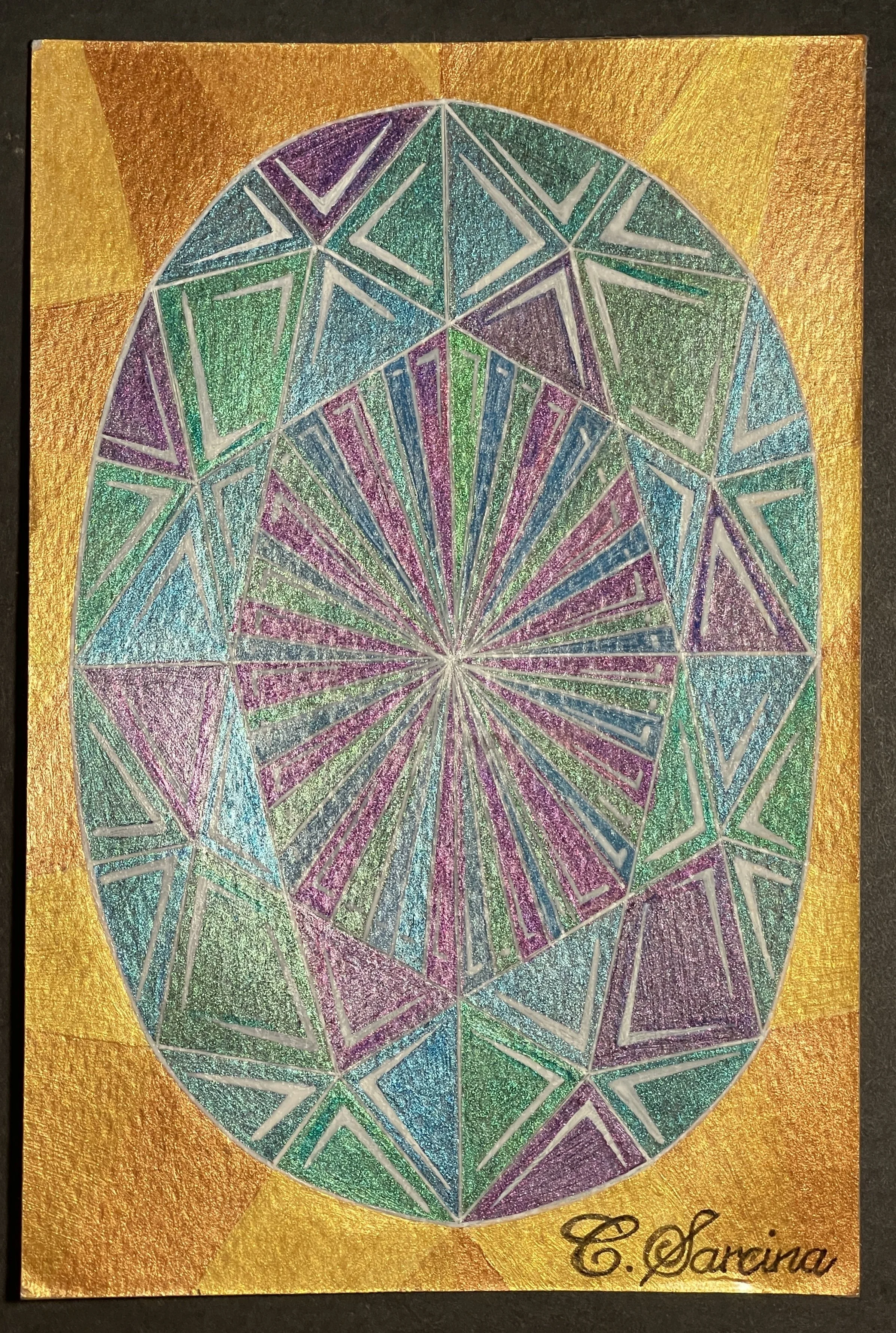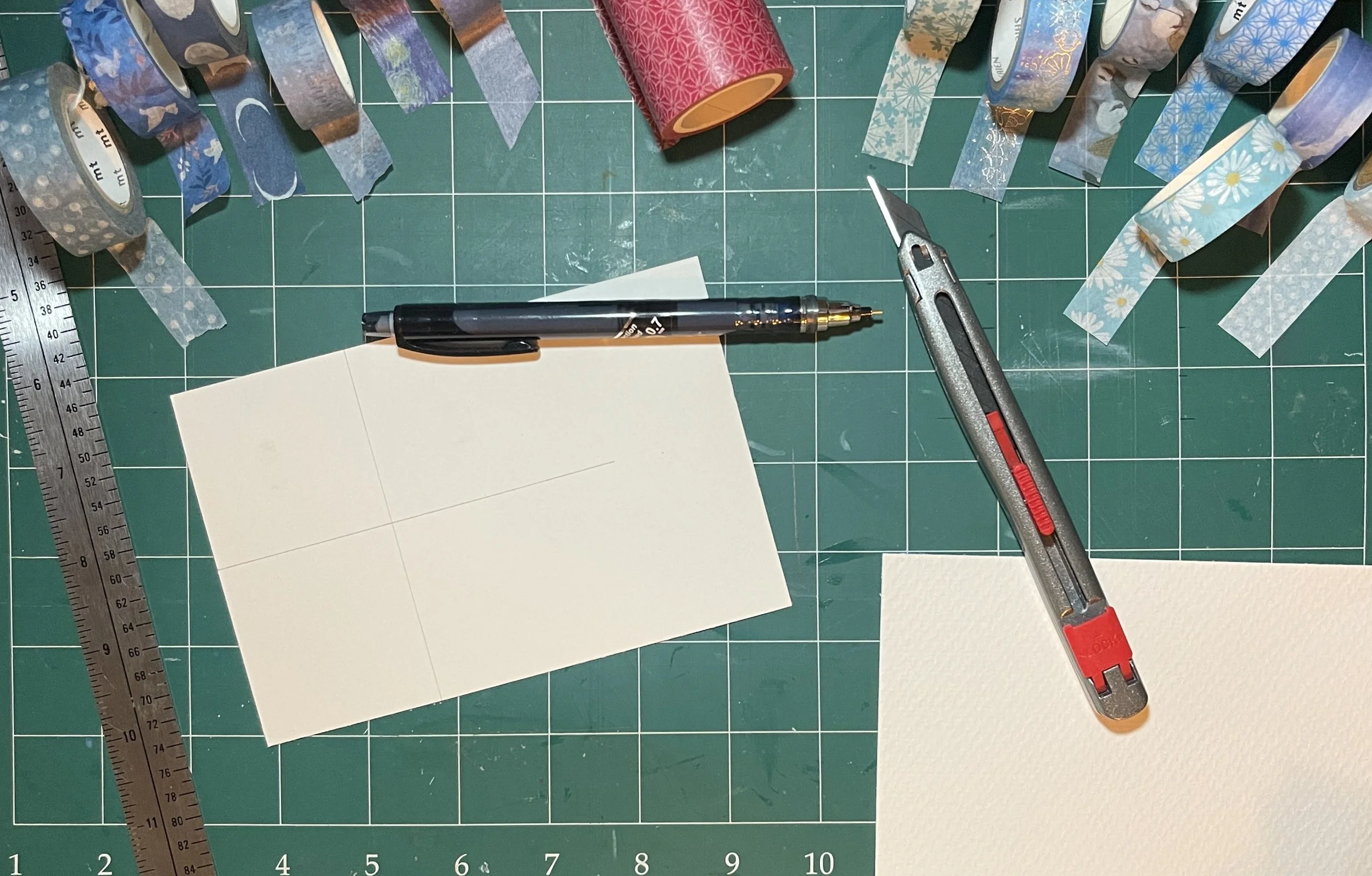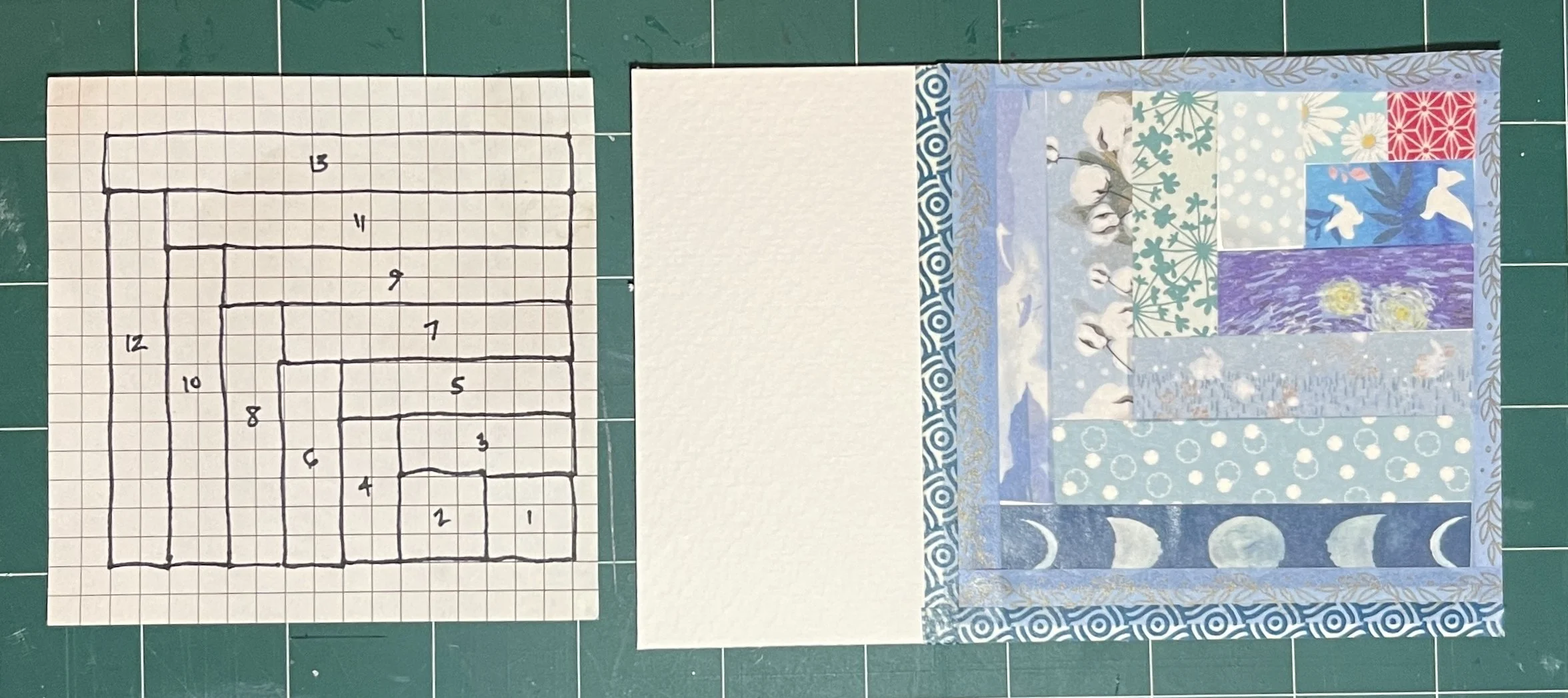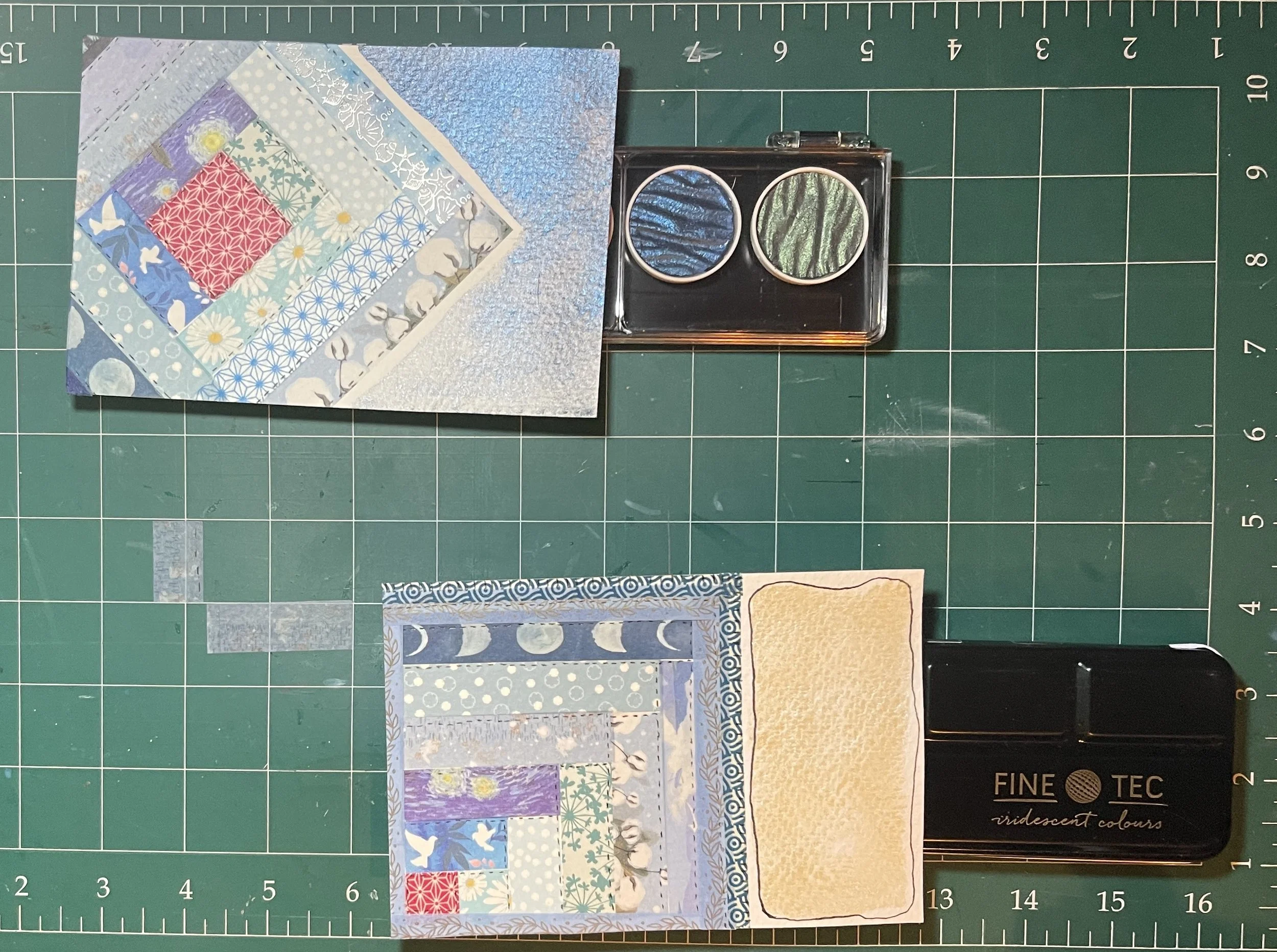Happy Tuesday, and welcome to the latest installment of our ToTs Series designed to inspire you to join in the fun of creating postcards for our International Mail Art | Celebration of Sapphire. This week, our topic is custom rollers. These rollers can be used to create patterns on gelatin prints, and you can create your own for a fraction of the price of commercially available ones.
If you’re like me, you’re cheap frugal, and you look for ways to spend less, and to use what you already have around the house. This is a perfect project for that. Here’s all you’ll need: recycled cardboard tubes, adhesive-backed foam sheets*, and an X-Acto knife or scissors. Note: these rollers can be used again and again, which makes them even more economical. Winning!
THE ROLLER DESIGNS: To begin, draw a design on the adhesive-backed foam (*although a bit more expensive than regular Dollar Store foam sheets, the adhesive backing makes glue unnecessary), keeping in mind the length of your cardboard tube.
This will be part of a 3/12” cardboard tube design. The adhesive back foam sheet was $1.25, and the tube was recycled.
The idea is to create a repeating pattern with your design which, once rolled onto the gelatin printing plate, will form a cohesive whole. Here, in photos, was my process for creating the 3/12” texture tubes:
I used an X-Acto blade to cut the notches, but if you prefer scissors, go for it! Pro Tip: Cut the design with the adhesive backing still attached (your blade or scissors will thank you).
Here’s the first strip of the design adhered to the tube. The next one is a bit different, which will make the resulting pattern more interesting. I also purposely misaligned the notches, again, for more interest.
The finished roller. I also alternated between straight and notched sides facing each other…for that visual interest thing again.
Above are the next 3 roller designs, plus the scraps! As you can see, curved elements can work. You can also treat the tube as a ‘canvas’, filling in empty spaces. Just remember that the foam will remove the paint from the plate, and the “empty” spaces will be the color of the paint on the plate, as you’ll see below.
THE PLATES AND PAPERS: After adding a thin layer of paint onto the Gelli plate with a brayer, I placed one roller at the bottom of the plate, lined up with the right edge, and rolled it to the top. I did the same on the left edge, which created two rows of my pattern. Try using the roller in different directions on the plate, too. (if I’d had a longer tube, I could have used just one pass over my 8” x 11” Gelli plate). Tip: use gloves if you don’t want your hands to get almost as much paint on them as on the plate.
Once the plate was dry, I used a pick up color of paint to create the final patterned paper. Unfortunately, I forgot to take photos of the full pages of printed papers (oops!), but here are some scraps left over after I created the postcard-sized finished collage:
Partial printed papers. I used Golden Fluid acrylic paints: Teal, Anthraquinone Blue, and Titan Buff on regular printer paper.
THE POSTCARD COLLAGE: I created the collage below using each of my printed papers. I used circle punches to break up the linear aspects, and repeated shapes around the card. I love how the two colors and their tints and shades play across the surface, and I don’t even mind where the white specks from the Gelli plate show through.
The completed 4”x 6” postcard.
I hope this project has inspired you to create custom pattern rollers to add to your stash of Gelli plate tools. And I hope you’ll create a fabulous postcard with them to add to the Celebration of Sapphire collection. ‘Can’t wait to see what you’ll design!
Penny will be up next month with another edition of ToTs, so stay tuned!
~Michelle
